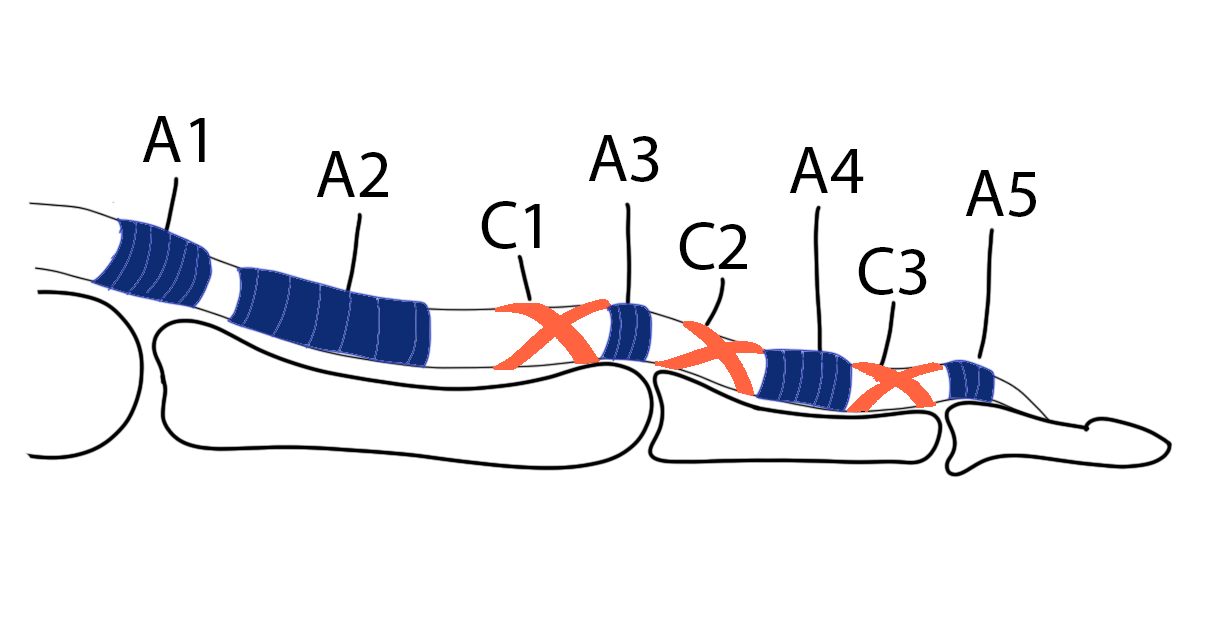What You MUST Know About Flexor Tendon Injuries
⌚️ read time: 4 minutes
If you’ve read my avocado cutting or hand injuries article, then you’ve heard me talk about the dangers of slipping with a knife.
Not that that’s necessarily breaking news to anybody — but what you might not know are the specific consequences of slipping with a knife and cutting your palm.
As in, what would you actually cut if that happened? And is it really that bad?
You see, a slip of the blade that goes into the palm (or palm side of the fingers) will almost always hit a flexor tendon (and often a nerve and artery, but let’s save that for a different day).
And not only that. If you’re holding something with that hand, those flexor tendons are under tension as the knife strikes them. They will snap in an instant.
If that’s not enough, I’m sorry to say that it gets even worse.
But let’s quickly talk anatomy so the rest of the discussion makes sense.
What’s a flexor tendon?
The flexor tendons are long white ‘ropes’ that anchor to the tips of your fingers and, when activated, bend the fingers down into a fist. They originate as muscles up in the forearm near the elbow and eventually taper down to these tendons that we use constantly (think grip, pinch, type, etc).
Upside down #13 are the white flexor tendons; Upside down #10 is the (blue) pulley system or flexor sheath the tendons slide through.
©️ Wilfredor, CC0, via Wikimedia Commons
From about the last one-third of your palm through near the tip of your finger, these tendons actually run inside a pulley system. For simplicity, think of this as one long tunnel through which the tendons slide.
This pulley system is actually a series of bands (see below), and the whole thing acts like the eyes on a fishing pole to keep the tendon as close to the bone as possible. This increases the force with which we can grip.
The part of the flexor tendon that is inside the tunnel is called ‘Zone 2’ (as opposed to the parts of the flexor tendons in other locations, such as the palm, wrist, or forearm.)
The flexor tendon “pulley system.”
©️ Rules of Thumb
Why does the pulley system matter?
Ok, so remember above when I said it gets worse?
Zone 2 flexor tendon injuries have the worst outcomes of any type of flexor tendon injury. And where do you think the majority of accidental knife slips end up?
You guessed it. Zone 2.
The only treatment for a flexor tendon injury (of any zone) is surgery to repair the cut ends back together. These will never just spontaneously heal on their own.
When I surgically repair the tendon, I tie a series of knots with some fancy woven stitches to make it as strong as possible.
But we’re still talking millimeter-thick suture here. Nothing that’s crazy strong.
So ultimately, the strength of the repair relies on the cut tendon ends scarring back together and forming a new biological bond. And that’s all fine and dandy for Zones 1, 3, 4, 5…
However. In Zone 2, not only will those repaired tendon ends start scarring together but they will also try to scar to the tunnel (or pulley system) that surrounds them.
And this is a recipe for stiffness, weakness, and just generally poor outcomes.
But primarily permanent stiffness.
But what should I do about this?
I hate to make this a ‘like your mom always said’ sort of article.
But like your mom always said, be super careful with knives. And all sharp things, really.
Don’t slip with a screwdriver with your hand on the other side. Don’t pit an avocado with your hand on the other side. Don’t slip with a power saw with your hand on the other side.
Or, for the musically inclined, my daughter broke out into song this week while cutting watermelon (to the tune of “Here we round the Mulberry Bush…”:
🎶 “Keeping my fingers above the blade, above the blade, above the blade. Keeping my fingers above the blade while cutting watermelon.” 🎶
…
And what am I really saying? These are almost always life-changing, potentially devastating injuries. How functional would you be if you couldn’t make a fist?
It’s not as simple as just sewing the ends back together. I see it too often and it’s always just…sad.
Don’t get me wrong. I get plenty of great and excellent outcomes from these injuries. I am fortunate to work with incredibly talented hand therapists and motivated patients who get the job done.
It just isn’t a guarantee. And the best treatment of all is prevention in the first place.
Takeaways:
Flexor tendon injuries are extremely common after ‘slip of a knife’ injures to the palm side of the hand
The worst injuries of all are to the ‘Zone 2’ location of flexor tendons…and this is unfortunately usually directly in the path of most slips
The best treatment is prevention in the first place. It’s worth the extra effort and time to slow down with those kitchen knives and avoid this injury at all costs.
So the next time you’re rushing to get dinner on the table and flying through chopping that onion as those inevitable tears drip down your face…pause for just a second and make sure you really know what you’re doing.
Save yourself that blink-of-an-eye injury that can change your hand function for life.



